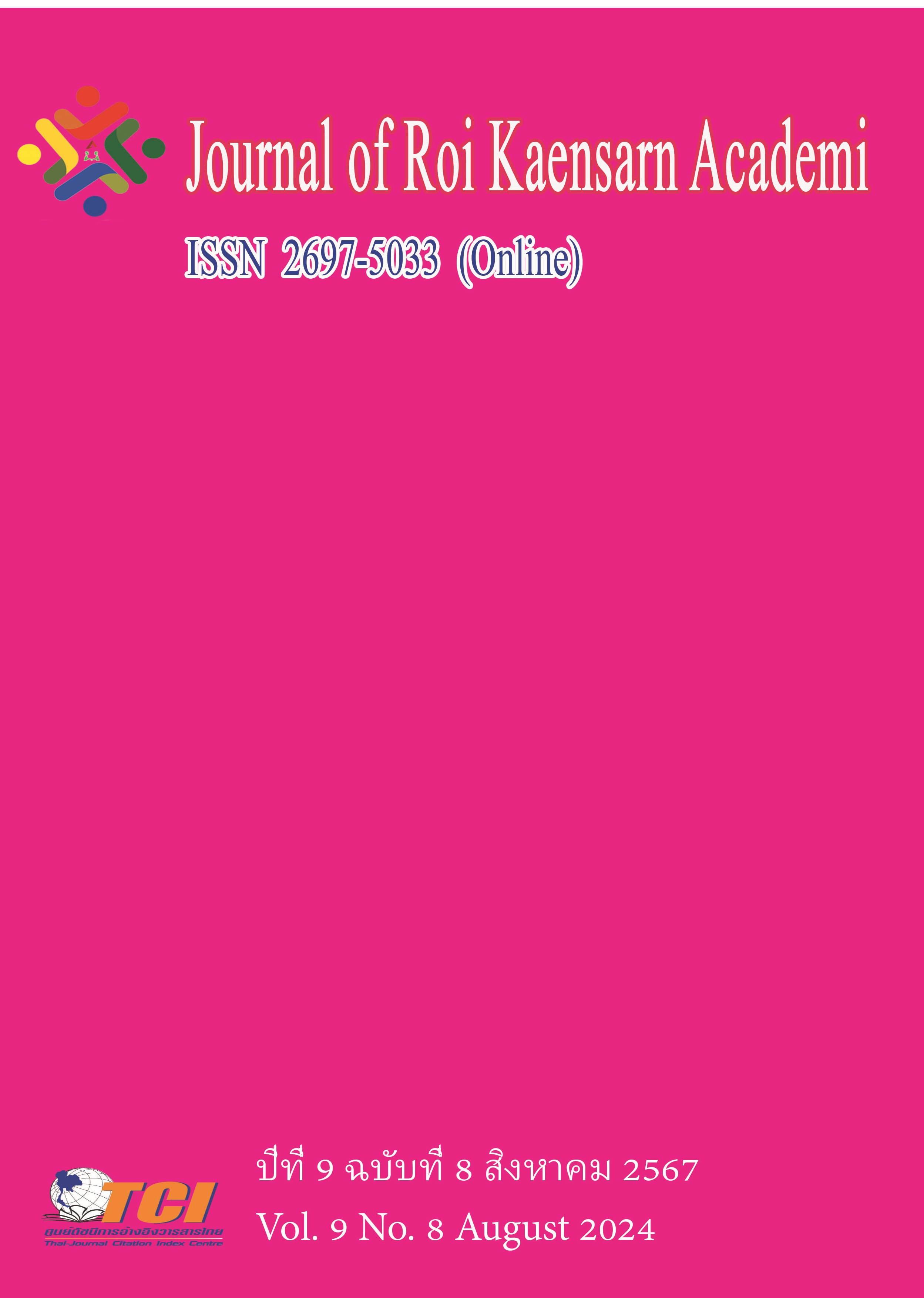The Role of Physical Education in Achieving the Goals of Healthy China 2030: A Study on College Students' Health Promotion
Main Article Content
บทคัดย่อ
The “Healthy China 2030” Plan, initiated in 2016 by President Xi Jinping, was designed to emphasize the crucial role of public health in advancing society and to divert the attention from the treatment of illness to the comprehensive promotion of physical health. Furthermore, it holds the belief that public physical condition should be given priority over mere economic expansion. The primary objective of this study is to determine the significance of physical education in promoting the health of college students and diseases prevention. The study adopts the comprehensive research method which emphasizes individual accountability, government intervention, and targeted support for populations deemed to be at elevated risk. Considering this context, this study highlights the significance of physical education by discussing its potential in achieving the five particular objectives of the “Healthy China 2030” Plan. The findings of the study shows, within the framework of the “Healthy China 2030” Plan, physical education now has emerged as a crucial means of promoting the well-being of college students and preventing illness, including the reduction of risks and the expansion of health care service. Thus, the study has reached a conclusion that, physical education plays a fundamental role in achieving the objectives of the “Healthy China 2030” Plan, particularly in the promotion of the physical condition of college students.
Article Details
เอกสารอ้างอิง
Ainsworth, B. E., & Sallis, J. F. (2022). The Beijing 2022 Winter Olympics: An opportunity to promote physical activity and winter sports in Chinese youth. Journal of Sport and Health Science, 11 (1), 3.
Anshel, M. H., & Si, G. (2008). Coping styles following acute stress in sport among elite Chinese athletes: A test of trait and transactional coping theories. Journal of Sport Behavior, 31 (1), 3.
Chen, P., Li, F., & Harmer, P. (2019). Healthy China 2030: moving from blueprint to action with a new focus on public health. The Lancet Public Health, 4 (9), e447.
Dai, J., & Menhas, R. (2020). Sustainable development goals, sports and physical activity: the localization of health-related sustainable development goals through sports in China: a narrative review. Risk Management and Healthcare Policy, 1419–1430.
Dong, B., Zou, Z., Song, Y., Hu, P., Luo, D., Wen, B., Gao, D., Wang, X., Yang, Z., & Ma, Y. (2020). Adolescent health and healthy China 2030: a review. Journal of Adolescent Health, 67 (5), S24–S31.
Fan, H., Shi, J., Wang, Y., & Wang, B.-Y. (2023). Changes in Health Human Resources Allocation in Ethnic Areas of China Before and After Implementation of “Healthy China 2030” Strategy.
Fong, G. T., Yuan, J., Craig, L. V, Xu, S. S., Meng, G., Quah, A. C. K., Seo, H.-G., Lee, S., Yoshimi, I., & Katanoda, K. (2021). Achieving the goals of healthy China 2030 depends on increasing smoking cessation in China: Comparative findings from the ITC project in China, Japan, and the Republic of Korea. China CDC Weekly, 3 (22), 463.
Gan, Q., & Anshel, M. H. (2006). Differences between elite and non-elite, male and female Chinese athletes on cognitive appraisal of stressful events in competitive sport. Journal of Sport Behavior, 29 (3), 213.
Li, Y., Zeng, X., Liu, J., Liu, Y., Liu, S., Yin, P., Qi, J., Zhao, Z., Yu, S., & Hu, Y. (2017). Can China achieve a one-third reduction in premature mortality from non-communicable diseases by 2030? BMC Medicine, 15, 1–11.
Ning, P., Schwebel, D. C., & Hu, G. (2017). Healthy China 2030: a missed opportunity for injury control. Injury Prevention, 23 (6), 363.
Qiu, H., Wang, X., Morrison, A. M., Kelly, C., & Wei, W. (2022). From ownership to responsibility: extending the theory of planned behavior to predict tourist environmentally responsible behavioral intentions. Journal of Sustainable Tourism, 1–24.
Santiago, A. (2021). Healthy China 2030: A Plan Towards Growth, Development and Innovation in Health Sector and Global Governance. Confucius Institute in Sofia, 2021, 380.
Tan, X., Liu, X., & Shao, H. (2017b). Healthy China 2030: A Vision for Health Care. Value in Health Regional Issues, 12, 112–114. https://doi.org/10.1016/j.vhri.2017.04.001
Tan, X., Zhang, Y., & Shao, H. (2019). Healthy China 2030, a breakthrough for improving health. Global Health Promotion, 26 (4), 96–99.
Vogeler, C. S., van den Dool, A., & Chen, M. (2023). Programmatic action in Chinese health policy—The making and design of “Healthy China 2030.” Review of Policy Research.
Wang, L., Wang, H., Wang, Z., Jiang, H., Li, W., Wang, S., Hao, L., Zhang, B., & Ding, G. (2021). Interpretation of healthy diet campaign in healthy China initiative 2019–2030. China CDC Weekly, 3 (16), 346.
Zhang, B. (2019). Regional Sports Industrial Development Strategy in the Vision of" Healthy China 2030". Ekoloji Dergisi, 107.
Zhang, J., Bai, D., Qin, L., & Song, P. (2022). The development of the Chinese version of the Sports Emotional Intelligence Scale. Frontiers in Psychology, 13, 984426.
Zhang, X., Zhou, A., & Ryall, E. (2021). Philosophy of sports in China: an overview of its history and academic research. Sport, Ethics and Philosophy, 15 (4), 556–571.
Zhongxue, C. (2022). How sports lead to the physical fitness in China? Revista de Psicología Del Deporte (Journal of Sport Psychology), 31 (2), 239–247.

